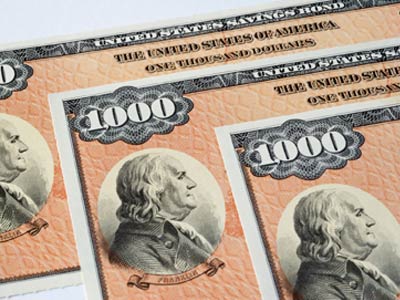Judging the value of your portfolio is a lot more work these days than opening your account statement.
The attempt to raise asset prices by making interest rates low, has not worked
because everyone knows what the Fed is doing.
When investors anticipate a stopping of the stimulus bond buying, a powerful
negative effect will occur.
By David C. Patterson
 Federal Reserve Chairman Ben Bernanke is playing games with your investments. The Fed’s quantitative-easing program and near-zero interest rate policy is explicitly aimed at (among other things) raising asset prices to create a “wealth effect” that will bring about more confidence and spending, which will support the economy and, in turn, the market.
Federal Reserve Chairman Ben Bernanke is playing games with your investments. The Fed’s quantitative-easing program and near-zero interest rate policy is explicitly aimed at (among other things) raising asset prices to create a “wealth effect” that will bring about more confidence and spending, which will support the economy and, in turn, the market.
The Fed’s game isn’t that easy to win, however. Since everyone knows what the Fed is doing, its actions are highly anticipated and “discounted” by the market, to the extent that when they actually occur they may have no effect on prices at all. Worse, they may have the opposite of the intended effect. This can happen if an “accommodative” move is judged to be a tad less so than was expected, sending the market down rather than up.
The Fed, of course, must take this possibility into account, since its whole wealth-effect strategy depends on market reaction. It may therefore have to make the move a little more accommodative, lest it disappoint.
But the market understands this also, and may have anticipated this second-order adjustment, a possibility that the Fed in turn must assess in deciding whether to make it. Mind you, “the market” isn’t one person, but a very large number of different actors, each trying to anticipate how all the others will behave.
The process can at some point turn powerfully negative, if the monetary stimulus stops, or is expected to stop, or becomes ineffective—which it will if it is expected to become ineffective, because it is only effective based on what the market expects.
If your head is spinning by now, join the club. The conditions are those of a classic “game” in the language of game theorists. The job of that profession (which includes several Nobel Prize winners) is to predict and if possible handicap the possible outcomes of such games. You don’t have to be much of a theorist to see that the number and volatility of outcomes increases geometrically with each new player, especially one as powerful and manipulative as the Fed.
And you don’t need a theory at all to notice that the market has been regularly moving in the “wrong” direction: Bad news is good news, and vice versa, because it isn’t the news itself that matters, but how the Fed will react to it—or, more accurately, how the market thinks it will react.
Price and value have a weak relationship at best on Wall Street, and the Fed seems intent on bringing about a complete divorce, by manipulating and generally inflating price, and by simultaneously undermining value.
Value, to make any sense for investment assets, must make some reference to why we hold the assets. Generally speaking, it isn’t for the ability to convert them to cash, in bulk and on short notice, but to generate a cash flow, or income stream, that continues reliably over some lengthy if not indefinite period and preserves its purchasing power. Value for this purpose would be the size of such a cash flow that the assets can support.
The Fed’s aggressive suppression of interest rates, while raising the price of bonds, has correspondingly destroyed their value. A 10-year Treasury bought today at a 2% yield would pay 1.2% net of tax (current top federal rate only), for an annual loss of .8% against the 2% rate of inflation that the Fed is aiming for. The loss would be greater against the higher rate that the Fed says it may tolerate, and greater still against the rate that many investors think they are really facing in their expenses.
Stocks have a better record of supporting lifestyles over long periods, but that ability also depends on their price level at the starting point. You might think that a draw of, say, 3% from a diversified equity portfolio would produce a cash flow that sustained its purchasing power over time. Yet looking at all 10- or 15-year, quarter-to-quarter periods since the start of the S&P index in 1926, this was true only about 60% of the time. Unless it is justified by real profit growth, higher price just means lower sustainable draw.
Higher prices logically mean lower value (more money having to be paid for the same thing), but they tend to correct themselves for just that reason: Wanting better value, people stop paying the higher price.
The rules are different in the game the Fed is playing. If the price of investment assets is going up, not because of improved economic conditions—creditworthiness of debtors, profitability of companies, real demand for commodities—but rather because the Fed has decreed that they shall go up, the natural, corrective effect is subverted, at least for as long as the Fed has credibility. In this respect there is no difference between prices on the stock market and in other markets: Engineered inflation is self-feeding rather than self-correcting, until it isn’t. We saw this play out to disastrous effect in the housing market as low mortgage rates pushed home prices ever higher until they collapsed in 2007-08.
All in all, judging the value of your investment portfolio is a lot more work these days than opening your account statement. The more people do that work, of course, the less stimulated they will feel about spending, and the more futile will be Fed policy and its supposed “wealth effect.”
Meanwhile, painful as it is to hold cash, it might pay to keep some handy as the game plays out. The Fed is a powerful but uncertain player. When it steps away, the turmoil may be more painful still, but will set the stage for a return of true value determined by market forces.
Mr. Patterson is chairman and CEO of Brandywine Trust Group LLC.
A version of this article appeared August 15, 2013, on page A15 in the U.S. edition of The Wall Street Journal, with the headline: The Games the Fed Plays With Your Investments.
Disclaimer: This is subjective and does not necessarily represent the options and views of Suacci.com

